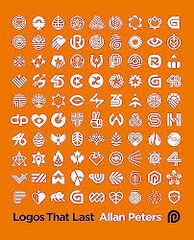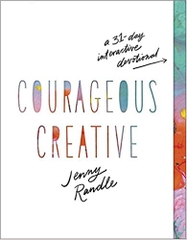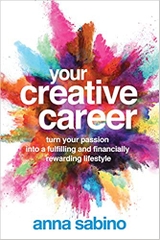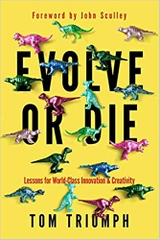-
-
-
Tổng tiền thanh toán:
-
-
Thông tin
-
Tìm sách theo yêu cầu
Creativity is not a gift from the gods, says Twyla Tharp, bestowed by some divine and mystical spark. It is the product of preparation and effort, and it's within reach of everyone who wants to achieve it. All it takes is the willingness to make creativity a habit, an integral part of your life: "In order to be creative, you have to know how to prepare to be creative." In "The Creative Habit, " Tharp takes the lessons she has learned in her remarkable thirty-five-year career and shares them with you, whatever creative impulses you follow -- whether you are a painter, composer, writer, director, choreographer, or, for that matter, a businessperson working on a deal, a chef developing a new dish, a mother wanting her child to see the world anew.When Tharp is at a creative dead end, she relies on a lifetime of exercises to help her get out of the rut, and "The Creative Habit" contains more than thirty of them to ease the fears of anyone facing a blank beginning and to open the mind to new possibilities.Tharp's exercises are practical and immediately doable -- for the novice or expert. In "Where's Your Pencil?" she reminds us to observe the world -- and get it down on paper. In "Coins and Chaos," she provides the simplest of mental games to restore order and peace. In "Do a Verb," she turns your mind and body into coworkers. In "Build a Bridge to the Next Day," she shows how to clean your cluttered mind overnight.To Tharp, sustained creativity begins with rituals, self-knowledge, harnessing your memories, and organizing your materials (so no insight is ever lost). Along the way she leads you by the hand through the painful first steps of scratching for ideas, finding the spine of your work, and getting out of ruts into productive grooves. In her creative realm, optimism rules. An empty room, a bare desk, a blank canvas can be energizing, not demoralizing. And in this inventive, encouraging book, Twyla Tharp shows us how to take a deep breath and begin!
Product Details
- Hardcover: 256 pages
- Publisher: Simon & Schuster; First Edition edition (October 7, 2003)
- Language: English
- ISBN-10: 0743235266
- ISBN-13: 978-0743235266
- Product Dimensions: 9.3 x 7.2 x 1 inches
- Shipping Weight: 1.5 pounds
- Average Customer Review: 4.5 out of 5 stars See all reviews (164 customer reviews)
- Amazon Best Sellers Rank: #60,707 in Books (See Top 100 in Books)
Editorial Reviews
From Publishers Weekly
Perhaps the leading choreographer of her generation, Tharp offers a thesis on creativity that is more complex than its self-help title suggests. To be sure, an array of prescriptions and exercises should do much to help those who feel some pent-up inventiveness to find a system for turning idea into product, whether that be a story, a painting or a song. This free-wheeling interest across various creative forms is one of the main points that sets this book apart and leads to its success. The approach may have been born of the need to reach an audience greater than choreographer hopefuls, and the diversity of examples (from Maurice Sendak to Beethoven on one page) frees the student to develop his or her own patterns and habits, rather than imposing some regimen that works for Tharp. The greatest number of illustrations, however, come from her experiences. As a result, this deeply personal book, while not a memoir, reveals much about her own struggles, goals and achievements. Finally, the book is also a rumination on the nature of creativity itself, exploring themes of process versus product, the influences of inspiration and rigorous study, and much more. It deserves a wide audience among general readers and should not be relegated to the self-help section of bookstores.
Copyright 2003 Reed Business Information, Inc.
Copyright 2003 Reed Business Information, Inc.
From School Library Journal
Adult/High School--Tharp shows how and why artists must actively seek and nurture inspiration. The dancer/choreographer draws heavily on her personal experiences to guide readers into cultivating habits that give birth to success. In addition, she recounts the experiences of artists from other disciplines, including painting and cinematography. Vignettes from the lives of people such as Mozart underline the fact that even geniuses work hard to realize the fruits of their labor. A personable tone is carried throughout the book, and within the text is a gold mine of advice. Tharp not only promotes tried-and-true habits, but also encourages readers to dig deep within themselves and come up with their own answers. Most sections conclude with exercises; they are fun and almost seamlessly bring home the author's main points. The black-and-white illustrations and photos are few in number. Students from all manner of creative arts who wish to make their dreams come true would benefit from reading this book.--Sheila Shoup, Fairfax County Public Library, VA
Copyright © Reed Business Information, a division of Reed Elsevier Inc. All rights reserved.
Copyright © Reed Business Information, a division of Reed Elsevier Inc. All rights reserved.
Most Helpful Customer Reviews
312 of 320 people found the following review helpfulBy Cedric's Mom VINE VOICE on October 22, 2003
Format: Hardcover
1 Comment Was this review helpful to you? YesNoTwyla Tharp's new book, The Creative Habit, is
1. Practical and straightforward, two attributes to be expected from a dancer. Dancers wrestle daily with the obstinacies of the flesh. It's not about smoke and mirrors. It's about hard work and commitment, the "habit" of showing up to do the work and developing one's creativity in the process.
2. Literary and literate. Tharp quotes the Bible, Dostoyevsky, Mozart, and many other greats of the Western Canon to illustrate her points and show that the struggle to be creative is nothing new and that great artists have fought the same battles as anyone who strives to create.
3. Accessible. There's no mystery or theory of genius here other than the habit of work. Tharp constantly makes the point that we have to establish habits for our creative pursuits or the work will not get done and the creativity will have no place to manifest.
4. Myth Busting. Mozart didn't get his musical genius from On High; in fact, he worked his fingers into early deformity from practicing so much. Not that Tharp proposes hurting oneself in the creative quest. She's merely making the point that practice is supreme, not sitting around waiting for the muse to make an appearance. Her choice of Mozart is historical, but I've heard similar about Michael Jordan. When other ball players were out doing whatever, Jordan was on the court practicing his shots.
5. Encouraging. One of America's greatest choreographers shares her demons with us, so we know our fears aren't "special," and no, they won't go away with success, so stop with the "if only." Wrestling demons is just part of the process; it comes with the territory.
I love the layout of this book: an airy, elegant use of color, font, and white space, which parallels the visual of her stage work.Read more ›
1. Practical and straightforward, two attributes to be expected from a dancer. Dancers wrestle daily with the obstinacies of the flesh. It's not about smoke and mirrors. It's about hard work and commitment, the "habit" of showing up to do the work and developing one's creativity in the process.
2. Literary and literate. Tharp quotes the Bible, Dostoyevsky, Mozart, and many other greats of the Western Canon to illustrate her points and show that the struggle to be creative is nothing new and that great artists have fought the same battles as anyone who strives to create.
3. Accessible. There's no mystery or theory of genius here other than the habit of work. Tharp constantly makes the point that we have to establish habits for our creative pursuits or the work will not get done and the creativity will have no place to manifest.
4. Myth Busting. Mozart didn't get his musical genius from On High; in fact, he worked his fingers into early deformity from practicing so much. Not that Tharp proposes hurting oneself in the creative quest. She's merely making the point that practice is supreme, not sitting around waiting for the muse to make an appearance. Her choice of Mozart is historical, but I've heard similar about Michael Jordan. When other ball players were out doing whatever, Jordan was on the court practicing his shots.
5. Encouraging. One of America's greatest choreographers shares her demons with us, so we know our fears aren't "special," and no, they won't go away with success, so stop with the "if only." Wrestling demons is just part of the process; it comes with the territory.
I love the layout of this book: an airy, elegant use of color, font, and white space, which parallels the visual of her stage work.Read more ›
106 of 109 people found the following review helpfulBy F. Avery on September 29, 2003
Format: Hardcover
Comment Was this review helpful to you? YesNoThis is an excellent guide to mastering the creative life for any creative professional (or as Tharp suggests, it's for any personal creativity as well). Full of great anecdotes, excellent quotes, usable activities and exercises, and most importantly, full of advice and questions that make the reader reassess their goals and their career. The book is thin and some pages occasionally have larger text for emphasis, but don't let that deceive you. It's a vast storehouse of knowledge: ranging from Mozart, to Dostoevsky, to childhood photographs, to how to keep your creative activities organized and so on and so forth. Tharp reminds me of Hemingway in her ability to get to the point, she doesn't stray, and yet her brief topics are fulfilling as starting points for your own exploration into what works for each individual artist. Books like this keep me going strong when I'm flagging.
106 of 111 people found the following review helpfulBy Dr. Cathy Goodwin TOP 500 REVIEWERVINE VOICE on November 17, 2004
Format: Hardcover
Inevitably any self-help creativity book will be compared to Julia Cameron's block-buster, The Artist's Way. Those who liked Cameron will find similarities here, but also differences. I will be recommmending both for my career change and business consulting clients.
Cameron directly uses "spirituality" throughout her book, with references to "God," who, she says, can be broadly defined. She appeals to images and emotion.
Tharp goes directly to action. She's strictly verbal: no cute sayings, no quotations all over the page. She's as unadorned as the Nike swish and just as straightforward: "Just do it" could be her motto.
Her own life seems starkly disciplined. Lots of people get up before dawn (they must not have dogs -- mine demands a walk right away) but Tharp actually gives up movies while she's working on a project. Not just movies, but videos as well. Too distracting, she says.
The key to art, she says, is practice. Dancers start with class, whether they're stars or corps members. Painters prepare their material. Practice harder, she says, but with "purpose." And practice what's difficult. We tend to practice only what we do well. I think not only of dancers, but of basketball players like Cynthia Cooper, who practiced left-handed dribbling and three-point shots for hours.
My favorite part of Tharp's book was her discussion of ruts. A rut can be associated iwth bad timing, a bad idea, bad luck, most likely because you don't realize you have changed and the world has changed.
Her advice foro a typical artist problem - when to stop tinkering - is straightforward: When you feel that you have straightened out a messy room, stop! Otherwise, keep working.Read more ›
Cameron directly uses "spirituality" throughout her book, with references to "God," who, she says, can be broadly defined. She appeals to images and emotion.
Tharp goes directly to action. She's strictly verbal: no cute sayings, no quotations all over the page. She's as unadorned as the Nike swish and just as straightforward: "Just do it" could be her motto.
Her own life seems starkly disciplined. Lots of people get up before dawn (they must not have dogs -- mine demands a walk right away) but Tharp actually gives up movies while she's working on a project. Not just movies, but videos as well. Too distracting, she says.
The key to art, she says, is practice. Dancers start with class, whether they're stars or corps members. Painters prepare their material. Practice harder, she says, but with "purpose." And practice what's difficult. We tend to practice only what we do well. I think not only of dancers, but of basketball players like Cynthia Cooper, who practiced left-handed dribbling and three-point shots for hours.
My favorite part of Tharp's book was her discussion of ruts. A rut can be associated iwth bad timing, a bad idea, bad luck, most likely because you don't realize you have changed and the world has changed.
Her advice foro a typical artist problem - when to stop tinkering - is straightforward: When you feel that you have straightened out a messy room, stop! Otherwise, keep working.Read more ›
XEM THÊM TẠI AMAZON.COM
- Thông tin chi tiết
- Mục lục
- Đọc thử
- Đọc thử
- Đánh giá & bình luận của người mua
- Những cuốn sách cùng chủ đề hoặc có liên quan
Link: http://www.amazon.com/Creative-Habit-Learn-Use-Life/dp/0743235266/
Tại web chỉ có một phần nhỏ các đầu sách đang có nên nếu cần tìm sách gì các bạn có thể liên hệ trực tiếp với Thư viện qua Mail, Zalo, Fanpage nhé
Đăng ký nhận tin qua email
Hãy đăng ký ngay hôm nay để nhận được những tin tức cập nhật mới nhất về sản phẩm và các chương trình giảm giá, khuyến mại của chúng tôi.












